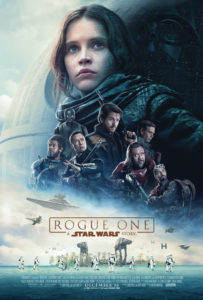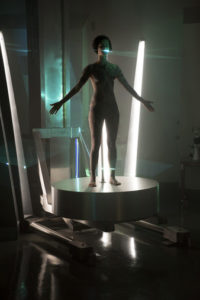It was back in September of 2016 when I first heard about the movie called Hidden Figures, starring Taraji P. Henson, Octavia Spencer, and Janelle Monáe. Hidden Figures is an inspirational story about black female physicists, mathematicians and engineers who were crucial to the US Space Race, and based on the book by Margot Lee Shetterly. I pre-ordered the book on Amazon, finished it before the movie came out, and saw the movie on the opening weekend.

The book, and also the movie, follows the lives of three extraordinary women – Dorothy Vaughan, Katherine Johnson, and Mary Jackson. Parts of this book and the movie brought me to tears. It was happy tears. This story is so much more than the untold historical account of space race. This story is about being a female aerospace engineer in 21st century America.
During the course of my high school education, I was encouraged to learn math and science. My Calculus teachers, Ms. Schettino and Mr. Nielsen, taught me the fundamentals that I still use on a daily basis. My Computer Science teacher, Mr. Day, introduced me to the wonderful world of programming. I did not become a CGI artist as I once hoped, but instead I became a scientific computing and data analysis wizard, so it all worked out in the end. My Physics teacher, Ms. Mosher, taught me how to think like an engineer – how to dissect one big problem into many smaller, easier problems. In my high school, a woman learning math and science was not a novelty. Yes, I lived in a liberal academic bubble. Then college and real world came at me with one purpose in mind: to destroy all of the happy sheltering bubbles.
“Being an engineer, Mary Jackson would eventually learn, meant being the only black person, or the only woman, or both, at industry conferences for years.” – p.144, Hidden Figures
It is safe to say that every female engineer has encountered this situation at some point in their life. In college, I was oftentimes the only female student in a group project. In graduate school, I was, for some time, the only female graduate student studying plasma physics. In conferences, I consider myself lucky if I see a few women in the audience. This was true in the 1960’s, and in some disciplines, still true in the 21st century. More and more women are entering the STEM field; however, the prevalent gender disparity in the field do discourage some from pursuing the field. Lack of women in leadership position and media plays a role. When you do not see someone like you succeeding in your field, what does that say about your chance of success? It certainly is not impossible. But are you setting up yourself for a lonely battle with no end in sight? I believe this is true not just for women in STEM, but for every minorities in every field. Representation matters.
“Each [woman] had cracked the hole in the wall a little wider, allowing the next talent to come through. And now that Mary had walked through, she was going to open the wall as wide as possible for the people coming behind her.” – p.199, Hidden Figures
While I believe that things are getting better since the days of Dorothy Vaughan, Katherine Johnson, and Mary Jackson, I did encounter my fair share of doubters and gender biases. Every snide sideways remark I get is a reminder that there are people out there who doubts my ability as an engineer because I am a woman. Every astonished face after I say that I am an aerospace engineer is a reminder that I am a novelty because I happened to be female. I wish for the day to come when a woman can have a profession of her desire and not cause the other people’s eyeballs to pop out of their socket. We need more allies – both women and men – to advocate for each other. We need more role models for women to look up to. In college, I desperately searched for stories about female aerospace engineers that I can relate to. While I had faith that there were other women who succeeded in my field, the fact that there was very little to no literature on them was telling. I expanded my search to science field, and read stories about Marie Curie, Rosalind Franklin, and whatever little snippets I could find on other female scientists.
The problem here? I cannot put myself and a chemist with two Nobel prizes on the same platform. The female mathematicians, scientists, and engineers that usually gets highlighted in literature and media belong in the top 1% of the field. Where is the other 99%? The message that is being sent here, is that unless you belong in the top 1%, expect that you will leave no footprints in history, and be prepared to have your qualifications periodically questioned for the rest of the career. The other stories – stories that was not told before – deserves to be told. Then perhaps more people will find a role model who they can relate to, who represents them the best, who is like them.
“There was virtually no aspect of twentieth-century defense technology that had not been touched by the hands and minds of female mathematicians.” – p.189, Hidden Figures
When I read the above quote, I actually cried happy tears. Katherine Johnson and Al Hamer coauthored papers on using stars to navigate the spacecraft in the event of onboard navigation computer failure. Katherine and Al’s findings helped bring back the Apollo 13 astronauts. Until I read this book, whenever I was asked why I wanted to be an engineer, I mentioned Apollo 13, and that while I did not see any female engineers in the story, I was not going to let that stop me. I have never been more excited to have been wrong – that there was a female scientist who played a crucial role in bringing back those astronauts home. I am proud to be able to tell the story of Katherine Johnson in the context of Apollo 13 from here on.
I am in no way black, but I can relate to the stories of Dorothy Vaughan, Katherine Johnson, and Mary Jackson. I know what it is like to have your findings doubted and scrutinized more than your male counterparts. I know what it is like to have to constantly advocate for yourself, then being criticized for being too aggressive (take that, Kobayashi Maru). It is exhausting. But when that alarm clock sounds the next morning, we all drag our tired butts out of the warm and cozy bed and do it all over again. Why? Because we love space. We love science. We love what we do. And guess what? There is a lot of us – engineers, mathematicians, scientists…who happens to be women. There will be more of us.
In Hidden Figures, I was reading the proof that I am not fighting a lonely fight. There were women who came before me, that paved the way for me, and now I am paving the way for future women who will join me in years to come. From one aerospace engineer to another…thank you for breaking the wall enough for me to come through. I promise I will break down the wall even more, and we will not stop until the wall is gone.
Thank you, Ms. Shetterly, for telling this story of hope, courage, and resillience.
“…the best thing about breaking a barrier was that it would never have to be broken again.” – p.200, Hidden Figures











